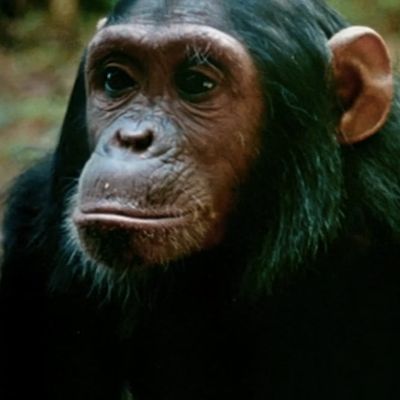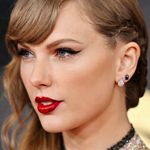
This list has been updated. *New additions are indicated with an asterisk.
In the hubbub surrounding Disney’s 100th anniversary, a very cool piece of film history fell through the cracks: the fact that Walt Disney himself invented the nature documentary.
The year was 1948, and Disney was starting to regain its footing after a difficult period that included World War II and the animators’ strike of 1941. Walt was beginning to think of things beyond mere animation, as the company would soon embark on making live-action features and, crucially, turning a patch of orange groves into a theme-park destination that would change the world.
But before that, Walt, inspired by his work on Bambi, would attempt a new form of storytelling — one in which the animals dictated the narrative. Those early films, dubbed “True-Life Adventures,” were a sensation: They won Oscars and became classroom staples. And ever since, Disney has been deeply committed to the nature documentary. In 2007, the Disneynature shingle was introduced, which looked to revive the drama of Walt’s “True-Life Adventures” with a more open message about conservation. In 2019, when Disney acquired the 21st Century Fox assets, they also gained control of National Geographic.
With that in mind, we’ve decided to cherry-pick the very best nature documentaries on Disney+. A disclaimer: There are a bunch of wonderful nature specials and TV series on Disney+, most of them from the National Geographic label, but they’re not included here. These are strictly the best feature-length nature documentaries available on the platform. One additional caveat: They’re the best documentaries on the service right now. It’s worth noting, since a number of classic Disney nature documentaries, old and new, have yet to debut on Disney+. The movies below are both hugely entertaining and hugely important. Maybe the next Jane Goodall is sitting down in front of their parents’ iPad right now, firing up a Disneynature doc, ready to change the world.
The African Lion (1955)
Although titled The African Lion, this “True-Life Adventure” from 1955 does a remarkable job showing a number of animal species in Kenya and Tanganyika: giraffes swaying their necks in the breeze, rhinos bathing in mud, and African buffalo keeping a watchful eye on predators (they’re too big and sturdily built to mess with). The description on Disney+ points out that the film is the result of three years of research by Elma and Alfred Milotte, whose short film inspired Walt Disney to hire them and ultimately led to the creation of “True-Life Adventures.” The African Lion was widely hailed (it won the Silver Bear for Documentaries at the Berlin Film Festival) and critically acclaimed upon its release. And while some of the science feels outdated (Winston Hibler describes the African lion as “nothing more than an overgrown cat”), the documentary still feels vibrant 65 years later. As for Elma and Alfred Milotte, they won six Academy Awards for their collaborations with Walt and would later become official Disney Legends.
The Crimson Wing: Mystery of the Flamingos (2008)
I know what you’re thinking: a feature-length documentary about flamingos? And honestly, who can blame you? But Crimson Wing (its title comes from the Latin name for flamingos) is one of the most fascinating and unexpectedly gripping entries in the Disneynature canon. Set at Lake Natron in Tanzania, it is bizarre and beautiful in equal measure, starting with the fact that two million flamingos migrate to the lake and lay their eggs on a giant, 10-mile wide island made of floating salt. From there it gets even stranger, like how flamingo chicks are fed a potent mixture of algae and their parent’s own blood or how those same chicks can tragically be slowed down if the salt calcifies around their feet. And who knew that hyenas hunted flamingos? (But don’t worry — even in death, “their life force returns to the lake.”) Everything about this documentary is appealingly odd and feels genuinely revelatory, looking at the bird’s time in Africa in almost novelistic detail. It’s like stumbling across an alien world you never knew existed, full of creatures as familiar as they are otherworldly. The Crimson Wing is really something.
Dolphin Reef (2018)
One of the latest Disneynature features is also one its best. Dolphin Reef arrived on Disney+ last week, the localized version of a movie that Disney had released in France (under the title Blue) way back in 2018. Narrated by a Natalie Portman, it focuses on a tropical reef and all of its bizarre inhabitants, including a grumpy mantis shrimp, a school of hump-head parrot fish, and, of course, a pod of dolphins, led by the young Echo and his put-upon mother Kumu. Portman’s narration is stately and engaged, expertly complimenting jaw-dropping underwater photography. Somehow, she manages to sound stately even when explaining how the parrot fish consume dead coral and then poop out sand. (When she’s doing a “voice” as one of the aquatic creatures, it’s even better; there’s an outside chance she could score an Oscar nomination for her roles as a snobby shrimp.) Oscillating between peaceful (as the camera glides through the reef) to thrilling (as a pod of orcas hunt a baby humpback whale) and back again, Dolphin Reef eschews any talk of pollution or mankind’s effects on the reef, for an apolitical mixture of education and entertainment. It’s like a feature film adaptation of EPCOT Center’s old Living Seas pavilion.
The Flood (2018)
Narrated by Angela Bassett, The Flood is centered around the Okavango Delta which, once a year, is flooded with water, turning an area surrounded by the sandy Kalahari Desert into “a wildlife paradise like none on earth.” Before the water comes, The Flood feels somewhat same-y, featuring hallmarks of any Africa-set nature documentary (a cheetah kills a gazelle in startling graphic detail). But once the water starts flowing, everything changes. “Billions of gallons of water engulf what was once a vast savannah,” as Bassett says, and you get to see animals that have been the subject of other nature documentaries in a new light: elephants lumbering through the water, leaping antelopes kicking up spray, lions swimming (and hunting a hippo no less). Produced in 2018 by National Geographic, The Flood is a more technologically advanced nature documentary than some of the other selections on the platform, with some eye-popping slow-motion flourishes that make you feel like you can count every water droplet, and is one of the most fascinating and transformative, made all the more impressive by Bassett’s pitch-perfect narration.
*Growing Up Wild (2016)
Narrated by Daveed Diggs, Growing Up Wild is a throwback to the “package films” that got Disney through World War II (relatively) unscathed. Only this time around, instead of cobbling together animated shorts and featurettes to make a movie-length collection, Growing Up Wild combines some of the most adorable moments from other Disneynature films — African Cats, Bears, Monkey Kingdom, and Chimpanzee, with a focus on the animals from those films when they were babies. Sure, this is rigged for maximum awwwws, but it’s also a handy compendium and might spark interest, especially from the younger viewers in the house, to watch the full-length versions of the movies (which are all very wonderful). Disneynature is perhaps the most undervalued brand in the entire Disney kingdom (especially after the company absorbed National Geographic). Getting the shingle some attention, even by exploiting our most primal desire to watch a movie full of cute animals.
Jane (2017)
This one is cheating (sort of). National Geographic’s Jane is ostensibly the story of Jane Goodall, the foremost primatologist and anthropologist, best known for her work studying chimpanzees. And while there are a fair amount of talking head interviews with Goodall as she retraces her life, it’s also very much a nature documentary, composed largely of footage of the researcher in Africa in the 1960s that was believed to be lost. (This footage has a haunted, eerie quality, underlined by the propulsive Philip Glass score.) Director Brett Morgen employs some nifty flourishes, like animating her journals to see how her research was progressing (and the accompanying newspaper coverage that followed), making her legwork come to life. And in a way Jane makes a perfect companion to the other nature documentaries on Disney+ by not only showing the interior lives of the chimpanzees through the prism of scientific study, but also by showing you the types of science and research that goes into the documentation of these animals. (But if you just want chimpanzee footage, Disneynature’s Chimpanzee, narrated by Tim Allen — who does a lot of his trademark grunting — is also available on Disney+.)
Jungle Cat (1960)
Big cats are a popular subject for nature documentaries, and there are a number of worthwhile films on Disney+ (see also: the Samuel L. Jackson–narrated African Cats). But what makes Jungle Cat, one of Walt’s “True-Life Adventures” from 1960, so special is that it focuses on the South American jaguar, instead of big cats in Africa or the American southwest (though there’s some good cougar content in The Vanishing Prairie). “Here is the quintessence of all that makes a true cat — the grace, the beauty, the perseverance and power,” narrator Winston Hibler purrs. (Fun fact: Hibler was also a writer on such beloved Disney classics as Cinderella and Peter Pan.) In telling the story of “the great cat,” Jungle Cat also serves as a celebration of the South American rainforest, a lush explosion of vegetation and color. There’s much screen time devoted to the flowering plants of the area, which goes along well with the equally flowery narration (“Hers is a career of assassination”) and the entire project nicely aligns with Walt’s fascination with South America, which began with a peacekeeping mission to the area in World War II and would inspire his work for years to come. It’s mind-boggling to think of went into making Jungle Cat, during a time before lightweight cameras and remotely operated drones; it’s a tropical marvel.
The Living Desert (1953)
Another one of the original “True-Life Adventures” (this one from 1953), this one features an animated prologue that explains how meteorological and geological anomalies give way to vast stretches like Death Valley. (The sequence was worked on by the legendary John Hench, a Disney artist who became one of the company’s most heralded Imagineers.) “Incredibly ugly yet fantastically beautiful” is how narrator (Winston Hibler, again) describes the so-called living desert, a supposed wasteland that is, in fact, full of fantastical creatures (including a breed of lizard described as “diminutive dinosaurs that dine on daisies”). While the narration can be outdated, unsophisticated, and clunky, it also adds a certain amount of humor and energy, especially when paired with Paul J. Smith’s energetic score. Notable for being first feature-length “True Life Adventure,” The Living Desert may be old-fashioned but it’s still visually arresting and emotionally engaging (hope that tortoise can flip itself over!) as ever.
Penguins (2019)
Released 14 years after March of the Penguins became a low-key sensation, Disneynature’s Penguins proves that there’s still a fair amount of ground to cover, partially by framing it as a romantic comedy between a young, clueless penguin named Steve and his love Adeline and partially because the filmmakers decided to populate the soundtrack with 80s bangers. That means our title card is accompanied by Patti LaBelle’s “Stir It Up” (yes, the song from Beverly Hills Cop) and dramatic moments are punctuated by vintage hits like REO Speedwagon’s “Can’t Fight This Feeling Anymore” and Whitesnake’s “Here I Go Again.” There’s no discernable reason for the songs, and licensing restrictions kept Disney from advertising their place in the movie, but it does a lot to keep Penguins, one of the lighter Disneynature romps (save for a near-miss orca attack, of course), even more bouncy and buoyant. The soundtrack also does the impossible: makes a subject matter already widely covered feel fresh and electric all over again. Who wants to march when you can groove?
*Polar Bear (2022)
The latest — and, so far, the last — Disneynature documentary is also maybe the single most depressing movie the company has ever released. Ostensibly it follows a family of polar bears in the arctic circle and is warmly (but matter-of-factly) narrated by Catherine Keener, who had recently contributed to Disney and Pixar’s record-breaking Incredibles 2. But more than any other Disneynature movie, it directly addresses the threat of climate change, with some of the most chilling onscreen text you’re likely to ever see end a movie. (We won’t spoil it here, but have your antidepressants handy.) Incredibly, Polar Bear was helmed by Alastair Fothergill and Jeff Wilson, who also worked on the penguins-set-to-1980s-jams film Penguins. Full of the kind of jaw-dropping imagery you’d expect from a Disneynature project, it’s the subtext of the movie, its grim appreciation of what we have before it’s all gone, that makes it so special. If this is the last Disneynature movie, then they left us with its bleakest, most beautiful statement.
Secrets of Life (1956)
You could think of Secrets of Life, a “True-Life Adventure” from 1956, as the precursor to Wings of Life. This is, according to narrator Hibler, “the story of adaptation and self-preservation,” and showcases all of the tiny ways the natural world is connected. (The poster said that it “entertainingly revealed nature’s most intimate secrets,” which sounds a lot more salacious than the movie actually is.) Some of Secrets of Life is a little hokey and science fair-ish, like seeing how seeds grow in a cutaway diorama or the lengthy montage set to time lapse photography of flowers opening up. But at the time this footage must have been mind-blowing, especially in full color. When you think about when it came out, it also feels quietly revolutionary, as it boldly showcased evolution and all the ways that plants and animals equip themselves for the natural world. Although the narration does sometimes slip into drippy Disney sentiment like “now the magic potion of this fairy tale,” when describing the reproduction of bees, no less (and right before Hibler explains that she emerges and “kills her rivals”), it doesn’t diminish its singular power. Truly magical.
The Vanishing Prairie (1954)
This 1954 entry, an Oscar winner for Best Documentary Feature, was produced with the cooperation of the United States Department of the Interior, National Park Service, and the Bureau of Indian Affairs and seeks to “recreate the wondrous pageant that was nature’s prairie.” (Keep in mind that this doesn’t sport Disney+’s catchall “contains outdated cultural depictions” disclaimer but the narration still has stuff like, “It was the red man who claimed this vast array as his own.” There’s also a part with the “prairie chicken” where they play stereotypical “tribal music” for comical effect. Yikes.) The cinematography beautifully portrays the expansiveness of the American plains, occasionally capturing something unexpected or surprisingly profound, like the birth of a buffalo calf in all its gooey glory. “The calf is helpless for the first few seconds,” narrator Hibler gravely intones. The animals of The Vanishing Prairie don’t have the otherworldly dazzle of some of the other nature documentaries on Disney+ (oh, look, ducks), but still come across as majestic and vital components of a fascinating ecosystem.
Wings of Life (2011)
Perhaps the greatest (and most underrated) Disneynature documentary, Wings of Life takes a heady subject matter — the symbiosis between animals and plants — and transforms it into something palpable and oftentimes downright exciting. Part of what makes Wings of Life such a triumph is how just abstract it can be; through slow-motion, specialized cameras and time-lapse photography, even the smallest and most still members of the jungle and desert become inspiring, locomotive titans. Plus, there’s the fact that Meryl Streep (yes, that Meryl Streep) narrates the entire documentary from the point of view of a flower, which lends Wings of Life an additional layer of gentle surrealism and plays into its framing structure as an epic love story between flora and fauna. Trust me, you haven’t lived until you’ve heard Oscar-winner Meryl Streep recite weird stuff like, “When pollinated, we cactus flowers turn into fruit, with seeds to start a new generation.” It also, unlike some of the other Disneynature films, is unashamed to get into the dangers facing our ecosystem, including the plight of the honeybee. At times the most beautiful, serene Disneynature film and also the more alarming, Wings of Life conjures a strange and enchanting experience all its own.




